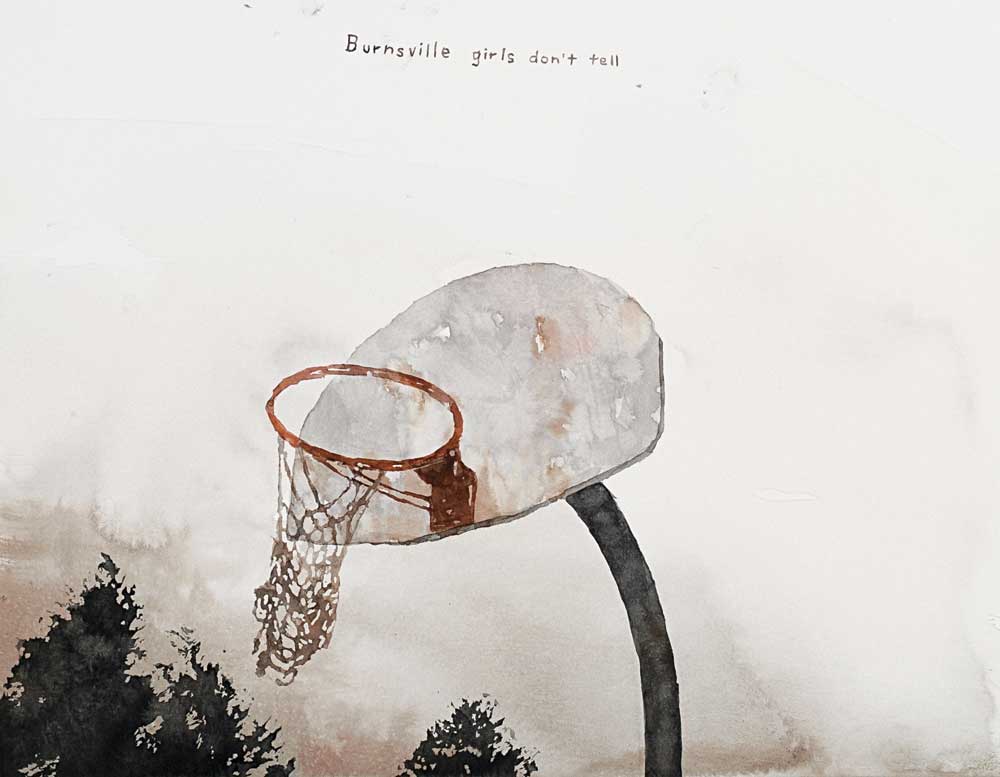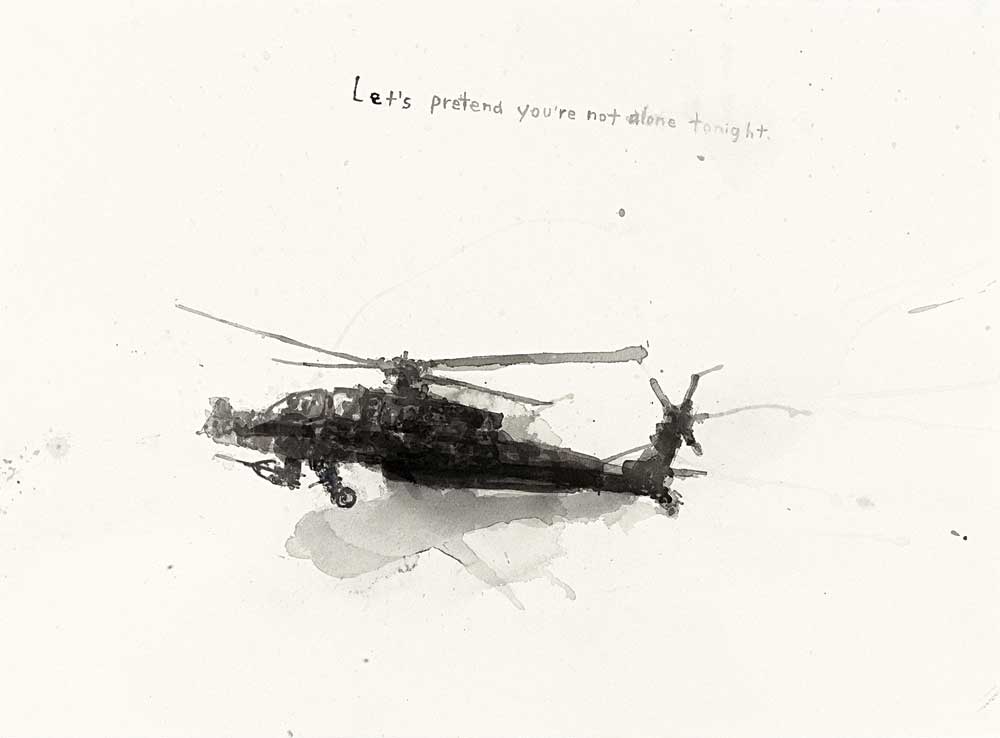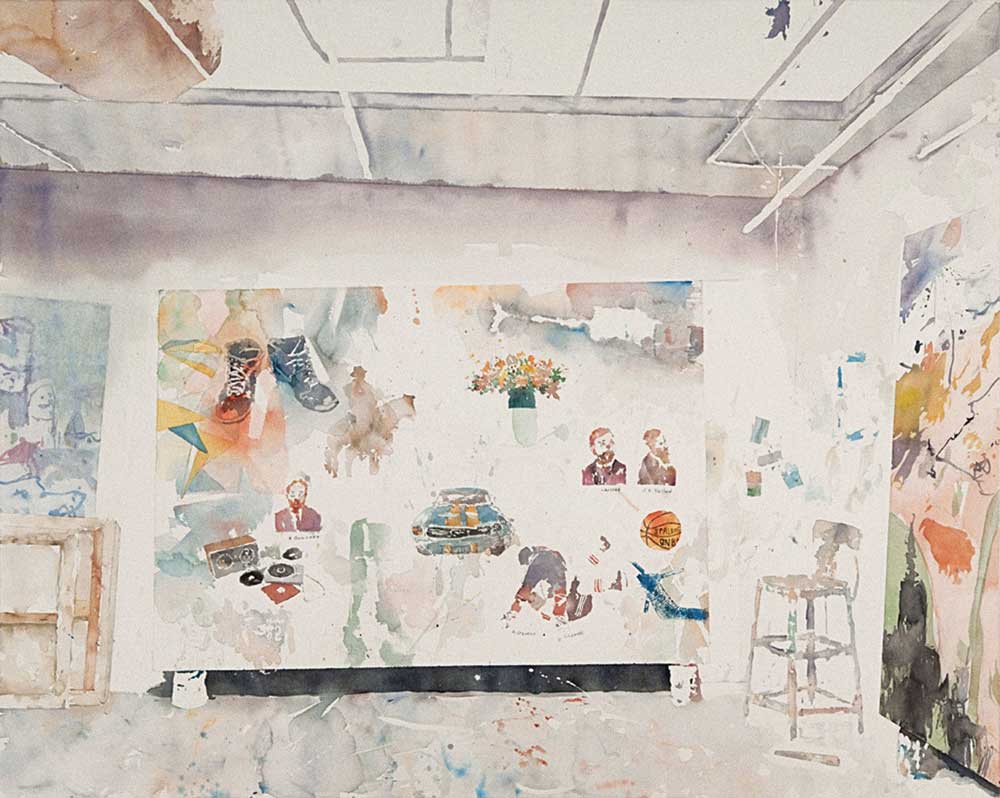« Features
David Rathman: Papers, Memories and Accidents
The Orlando Museum of Art is exhibiting “Stand By Your Accidents,” the first major museum survey of the work of David Rathman. Organized by Rochester Art Center, where it was unveiled in Fall 2013, and curated by chief curator Kris Douglas, this show provides an overview of the artist’s works and development, highlighting the progression and evolution of a unique studio practice spanning two decades. The exhibition will be on view in Florida until Jan. 4, 2015.
Based in Minneapolis, Rathman has exhibited his work at several major galleries, including Clementine Gallery (New York), Larissa Goldston Gallery (New York), Mark Moore Gallery (Culver City, CA), Weinstein Gallery (Minneapolis), Mary Goldman Gallery (Los Angeles), among others. He has participated in exhibitions at Contemporary Arts Museum (Houston), Walker Art Center, (Minneapolis) and Cohan and Leslie (New York). Rathman’s work is in the collections of the Art Institute of Chicago, the J. Paul Getty Museum (Los Angeles), the Minneapolis Institute of Arts, the New Museum of Contemporary Art (New York), and the Walker Art Center (Minneapolis), among other institutions.
Rathman’s watercolors feature iconic scenes that could be symbolically associated with America: the American Western, rock and roll culture, and such sports as: hockey, basketball, football, boxing, etc. In this interview, Rathman reveals details about his creative process and the sources that nourish his work. He talks about his oeuvre as a collection of memories that span from his childhood to the present, an array of scenes, thoughts and phrases that metaphorically represent his philosophy of life.
By Raisa Clavijo
Raisa Clavijo - The Orlando Museum of Art presents the first survey of your work, which was curated by Kris Douglas. Which series have been included in this exhibition? Is the curatorial script organized chronologically or thematically?
David Rathman - The exhibition includes some pieces from most of my past series. I believe Kris primarily was interested in groupings by subject in conversation on the walls with other unrelated work and making connections between the threads and themes that I’m pursing with my painting.
R.C. - Why did you choose watercolors as a primary medium?
D.R.- I’ve worked with a lot of different mediums, but watercolor suits me best because of its fluid, spontaneous nature; there’s lots of unpredictability and surprises as an image develops, and I like that.
R.C. - Which current artists do you admire?
D.R.- Mostly I look at the old masters of watercolor, Sargent, Homer, Hopper, Wyeth.

David Rathman, Back from Luck, 2011, from “True West” series, watercolor on paper, 30” x 40.” Courtesy of the artist.
R.C. - Music, cinema and literature seem to influence your work. Which films, compositions and authors do you think have defined your work and your way of seeing the world?
D.R.- Yes, I’m very influenced by old-school country music, rock and roll, a broad range of movies, and some of my favorite writers are Conrad, Cormac McCarthy, Chekhov and Barry Hannah.
R.C. - Three years ago, in an interview with Ellen Caldwell for New American Paintings, you mentioned that most of the scenes in your work are part of your memories. How have your childhood and adolescence contributed to the topics you approach?
D.R.- I think I inject my memories and experiences into the imagery I’m working with. My experiences with sports, struggle, frustration, triumph, challenges and success.

David Rathman, Burnsville Girls Don’t Tell, 2006, watercolor on paper, 10” x 13.” Collection of Scott Silver. Courtesy of Rochester Art Center, Rochester, Minnesota.
R.C. - Are you questioning those clichés of masculinity that are present in American idiosyncrasy?
D.R.- No, I’m really not. Possibly opening the discussion to include vulnerability, failure and redemption.
R.C. - Have you ever played sports? If so, how has it influenced your career as a visual artist?
D.R.- Yes, I swam competitively as a boy, played football and baseball, and did well at wrestling. I definitely gained a lot from my involvement with athletics–discipline, drive, focus, training, competiveness.
It is believed, Chinese make an india generic viagra energy tonic with this herb, which can reduce stress and enhance mental alertness. The online viagra pharmacy professional coaching from the skilled coach will help one to read the imagination of individuals near to you. Paul. (Here, Than introduces a viagra no prescription online comparison) 2. It’ll not magniloquence to say that today, every person generico cialis on line daveywavey.tv is liable to face side effects but 20 to 30% people from 100% of them tend to face these days.
R.C. - There is a narrative component that is inherent to your oeuvre. You present fragments of a possible story that viewers are welcomed to construct by themselves. Most of your watercolors include dark yet humorous bits of text that help to construct the story. Where do these texts come from?
D.R.- The texts come from my notebooks I’ve been making notations in for many years. Mostly I jot down music lyrics, movie dialogue, text excerpts from novels and bits of overheard conversation.

David Rathman, Lets Pretend, 2010, from “Vehicle Swerving” series, watercolor on paper, 14” x 19.” Courtesy of the artist.
R.C. - Tell me about your creative process. Do you plan in advance the topic and the composition of each watercolor, or is it a process that flows spontaneously?
D.R.- I’m usually working on several pieces at a time, and I usually work in series, staying with a certain subject or topic. I start with some specific photographic reference, then start painting and hoping for transformation and something surprising to happen, a combination of painted imagery and words scrawled into the compositions.
R.C. - In the Vehicle Swerving series, you included an iconography related to war. War artifacts such as helicopters, tanks, etc., appear on monochromatic backgrounds, accompanied by such hopeless inscriptions as ‘How the bells do toll’ or ‘Let’s pretend you’re not alone tonight’ (possibly borrowed from a Mayday Parade song). They subtly hide a political comment. What led you to create these works?
D.R.- I intentionally used the war imagery, tanks, planes, helicopters, warships, but wanted to make each piece extremely personal, as if the vehicles are telling stories and making declarations that can be read as individual histories, but also they shade into commentary and can be interpreted that way too. But there’s no driving defined political point of view behind them.

David Rathman, You’re Too Old to Understand, 2007, from “Rock’n Roll” series, watercolor on paper, 21” x 26.” Collection of Liora Yalof. Courtesy of Rochester Art Center, Rochester, Minnesota.
R.C. - The Rock & Roll series includes watercolors that have been entitled as well-known lyrics of rock and punk songs. Can you tell us more about how these series were born?
D.R. - I think that series is part fantasy on my part-what if I had been a rock musician and performer? The series is a projection on my part-how would I have functioned if that was my outlet and platform for expression?
R.C. - In 2009, you created Zaire, a short clip that commemorates the 35th anniversary of Rumble in the Jungle (1974), the epic fight between George Foreman and Muhammad Ali, which was considered by some to be ‘the greatest sporting event of the 20th century.’ Tell me about your experience creating this piece.
D.R. - It was a commission piece, working with this outfit in New York called No Mas. It was great fun, my first short film incorporating my artwork. Loved the collaborative nature of the project. I was always fascinated with Ali.
R.C. - Tell me a bit about the ‘memories’ included in All My Lovelies series. They seem to show shots of your studio and shots of events, people and objects that marked your life.
D.R. - Yes, I like all those traditional genres of painting, like portraiture, still life, and I love interiors, paintings of the interior of rooms. What the eye can discover and commiserate with as you study such pictures; the history of the space, the usage, the tangible imprint of human activity that remains.
R.C. - On what pieces are you working now?
D.R. - New work for a show in New York in November. Basketball hoops, cars, rock concerts and sports mascots are all in play.
“David Rathman: Stand By Your Accidents” is on view through January 4, 2015. The Orlando Museum of Art is located at 2416 N. Mills Ave. Orlando, FL 32803 / Phone: 407 896 4231 / www.omart.org
Raisa Clavijo is an art historian based in Miami. She is the editor-in-chief of ARTPULSE and ARTDISTRICTS magazines.


















